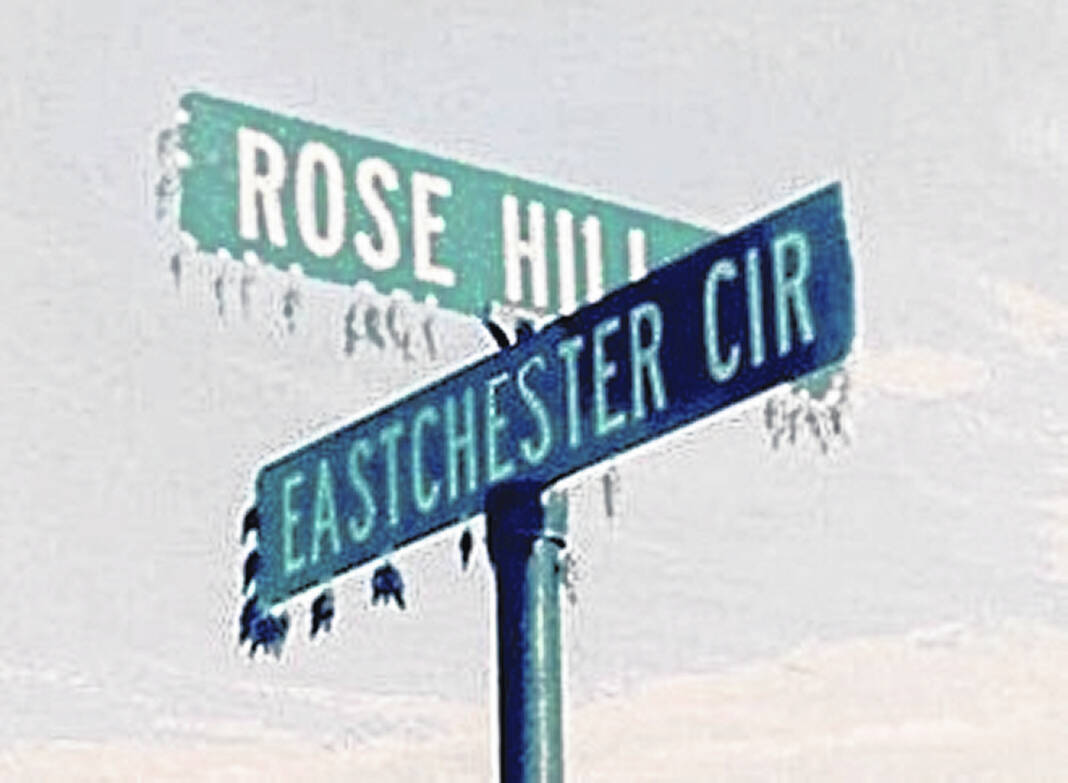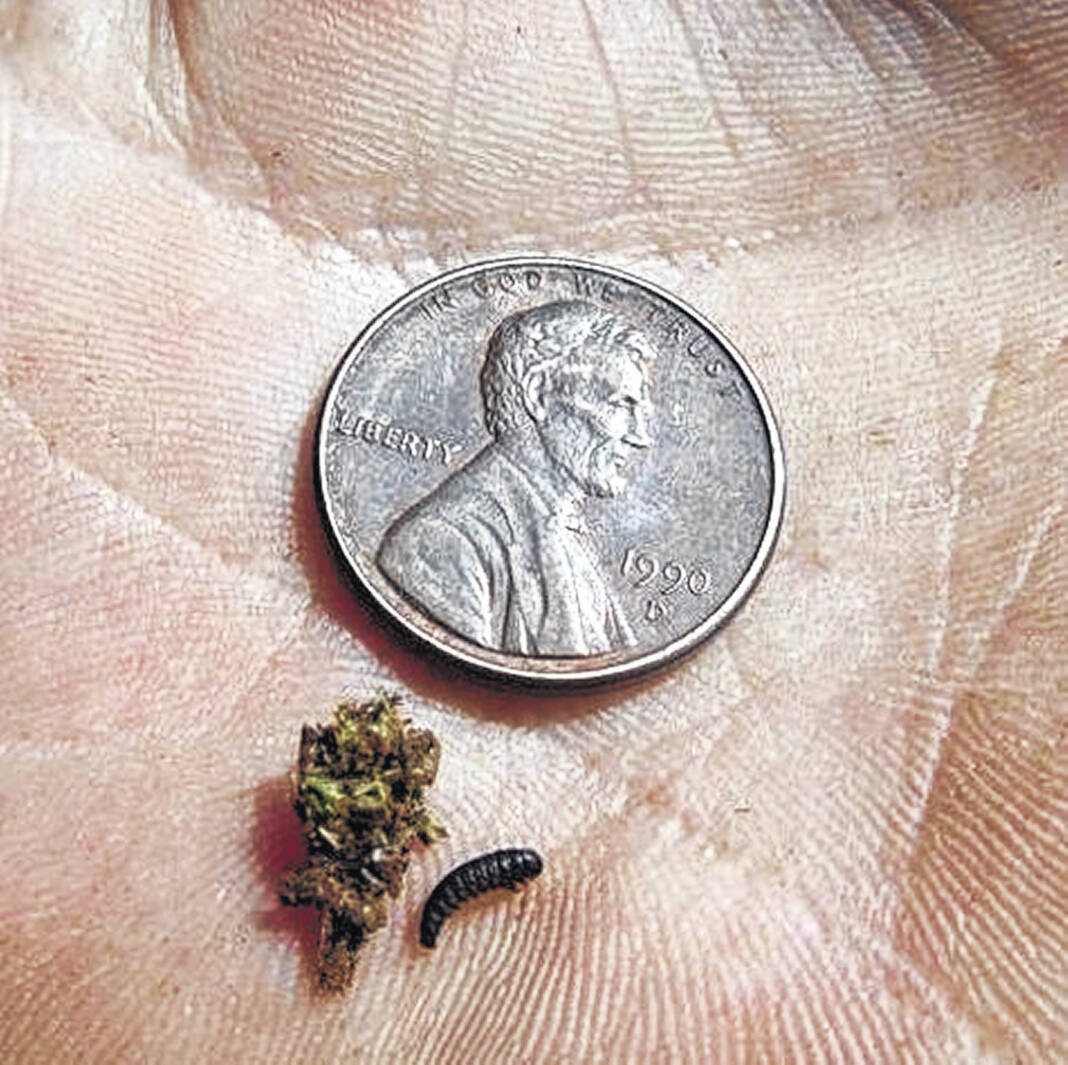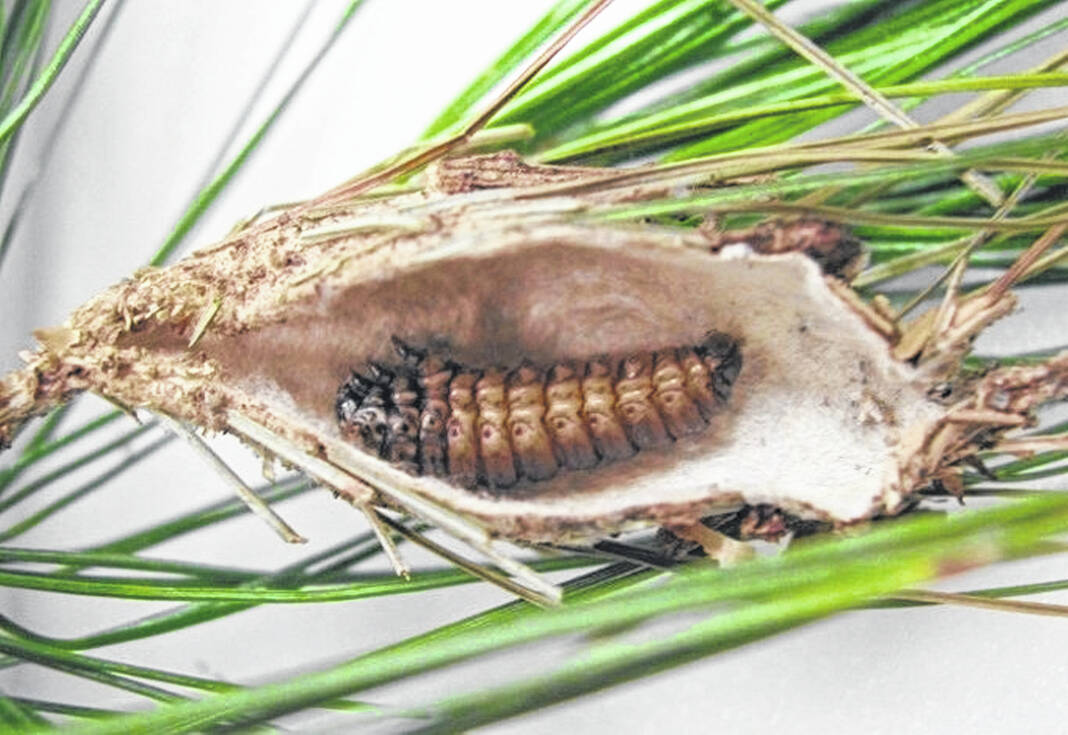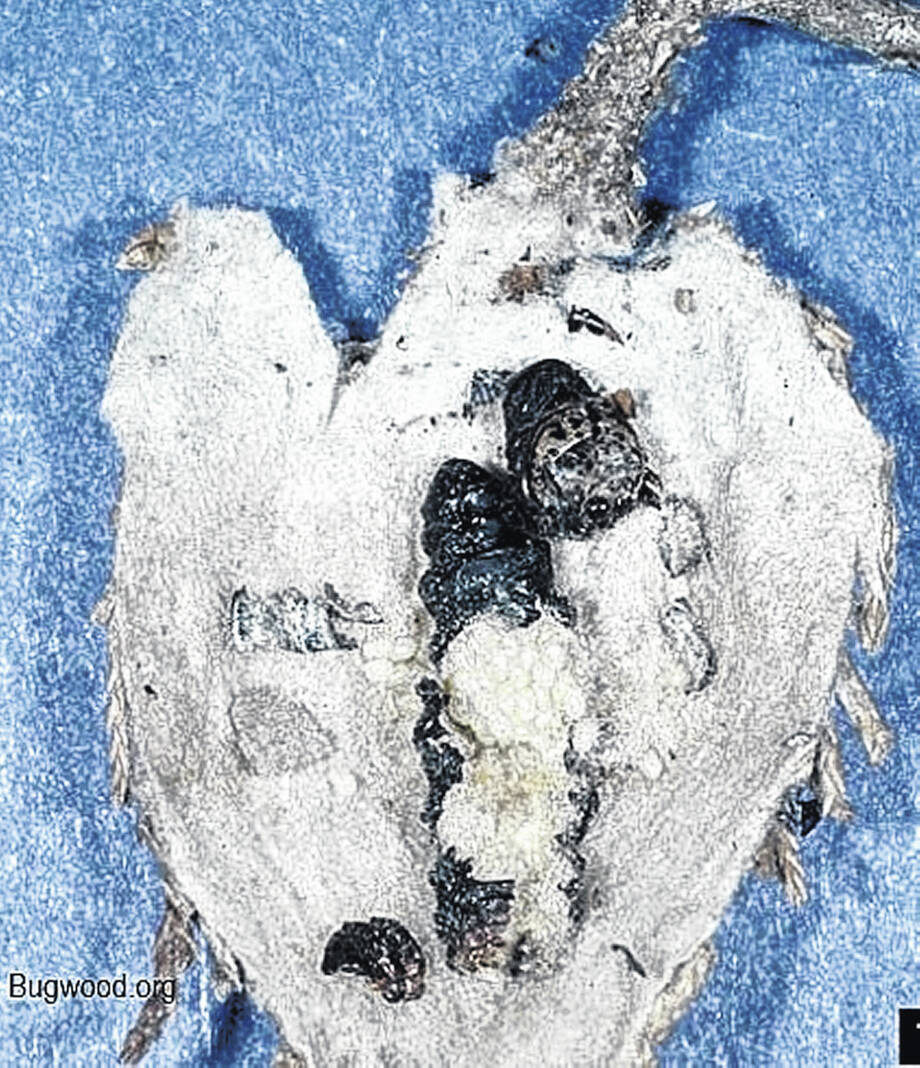



Bagworm eggs will be hatching soon. It is time to watch trees and shrubs that had bagworm last year. Their favorite hosts are evergreen trees but don’t overlook deciduous trees and shrubs. They can be found on 130 different species.
The emerging 1st instar caterpillars are only 1/8 in long. They begin constructing their bag right away to camouflage themselves by sticking pieces of plant material to their bodies with a sticky silk. Often, they are not noticed until late in the season (think late-August) when they have defoliated the host plant. At that time their bags are like raincoats, and they are not feeding. It makes them impossible to control late in the season. That is why NOW is the time to control them.
A single female can produce 500-1000 eggs. The caterpillars can use their silk to move on the wind (called ballooning) but most will remain where they hatch. Their silk bags are impervious to contact sprays. They must be controlled while they are still feeding. The caterpillars feed for about six weeks.
Young caterpillars (with bags less that 1/2 inches) are very susceptible to a biological insecticide with the active ingredient Bacillus thurengensis var. kurstaki (Btk) (e.g., Dipel and Thuricide). People, pets, and good bug allies are not harmed by Btk. Two applications are required a week to 10 days apart because of the extended egg hatch.
Because the caterpillar is so small, it is nice to have a more visible indicator of egg hatch. The Ohio State University has a phenological calendar (https://weather.cfaes.osu.edu/gdd/default.asp ) that relates insect emergence to bloom time. About a week after the Japanese tree lilac is in full bloom, the bagworms begin to hatch. The Japanese tree lilac is not the shrubby one that blooms in April. Look for the tree lilac. Wait a week to ten days after the first spray and make a second application. Japanese tree lilacs are located at the Carnegie Library and the Master Gardener Phenology Garden in Washington Cemetery.
Once the bag is longer that 1/2 inch, a standard insecticide labelled for bag worm control is necessary. Be sure to read and follow all label directions. The label is the law in Ohio.
One of the Master Gardeners paid his kids .01c for each bag worm they collected off the plant. Now he has the same deal with his grandchildren. I don’t know the inflationary rate for each bag worm the grandkids collect. Be sure to destroy the bags. The caterpillar will walk right back up the plant if the bag is just thrown on the ground.
Please call the Extension professional in your county with questions. In Fayette County, call Sara Creamer at 740-335-1150 or email her at [email protected].





